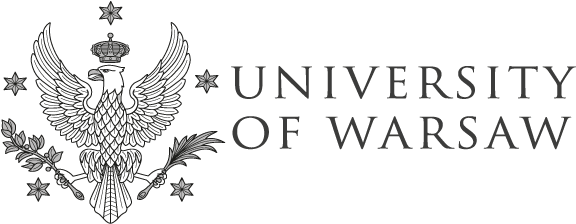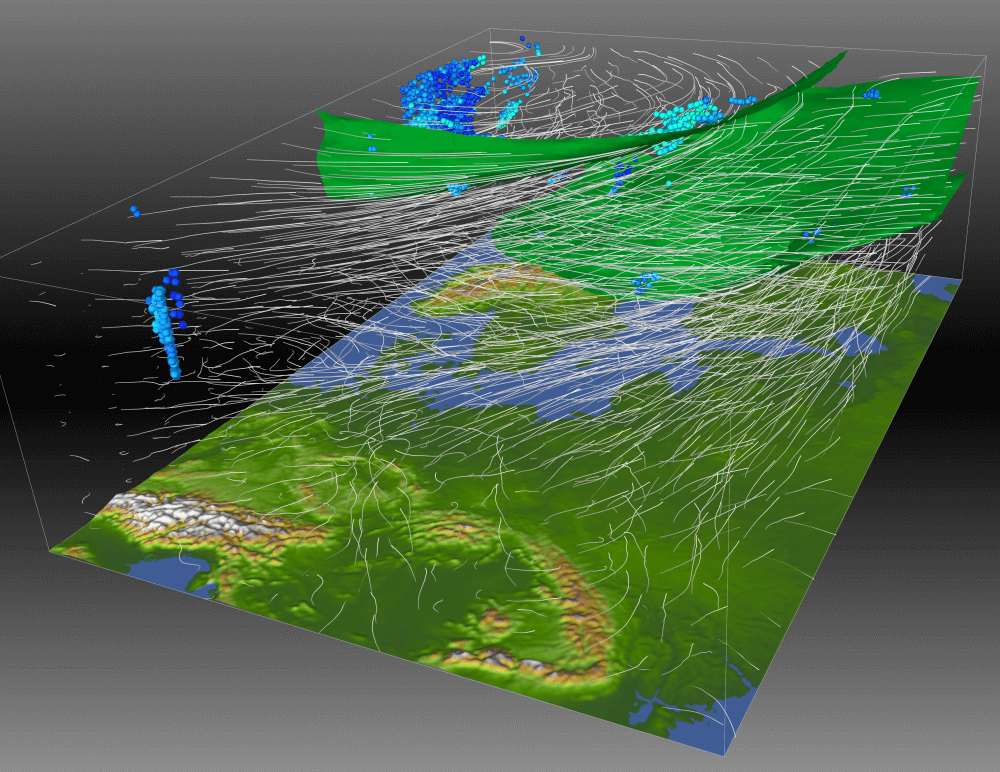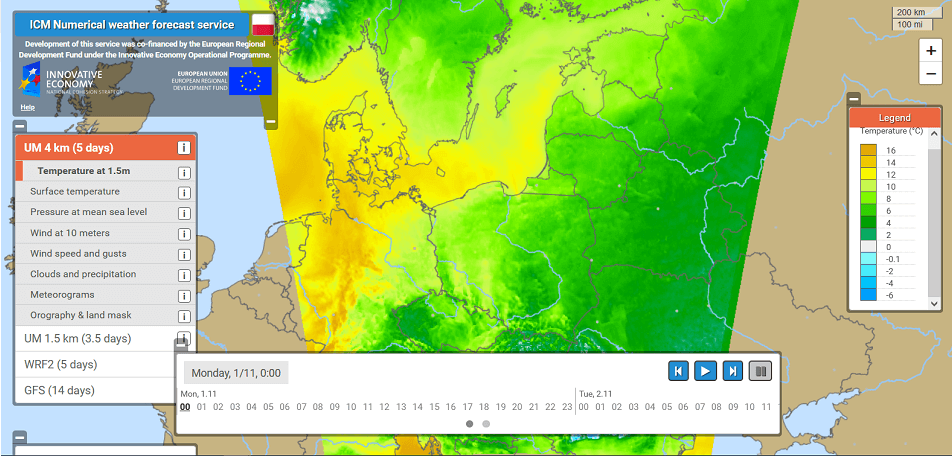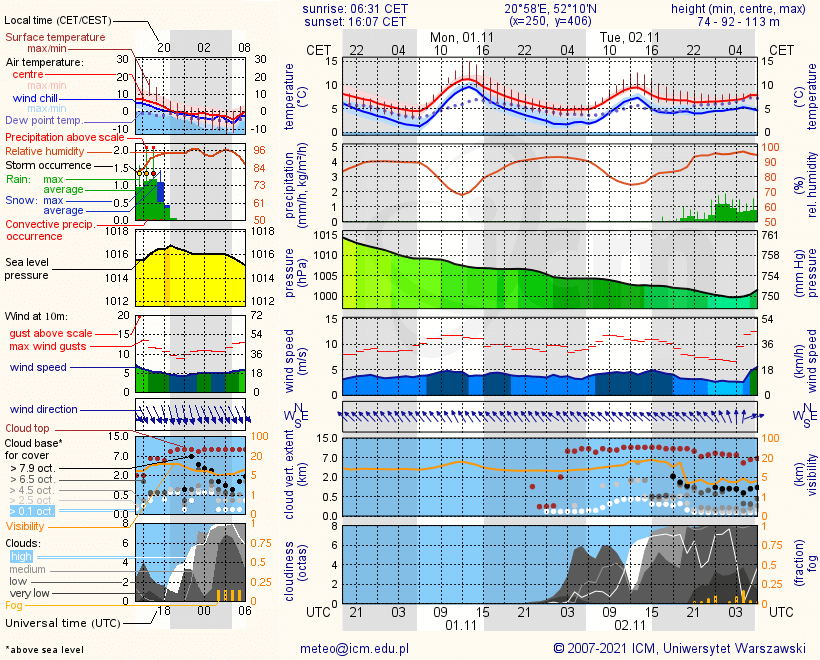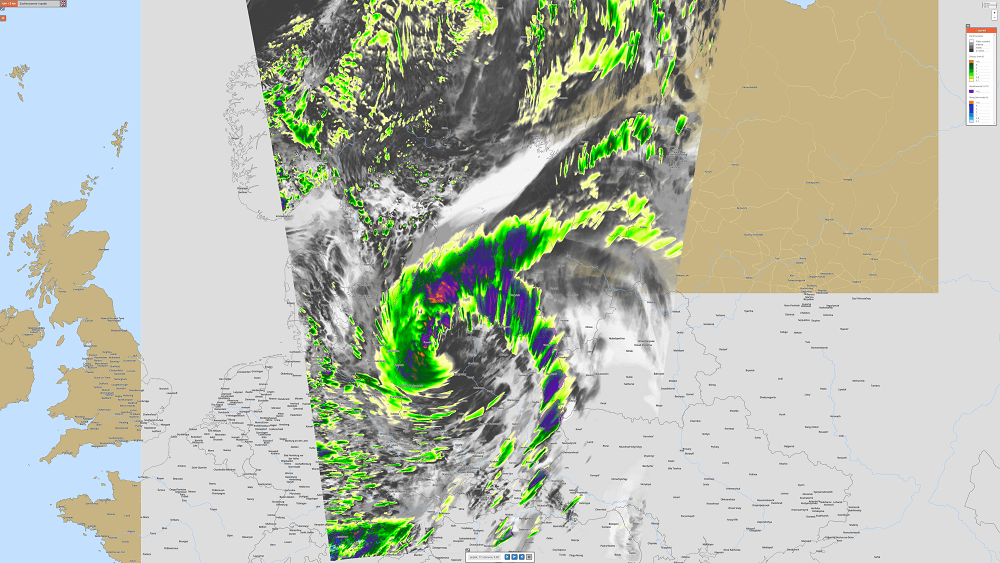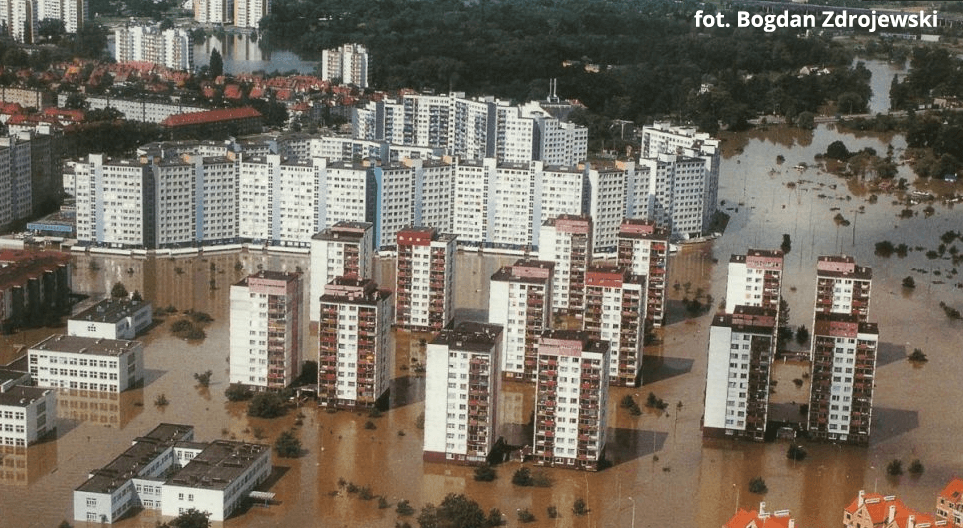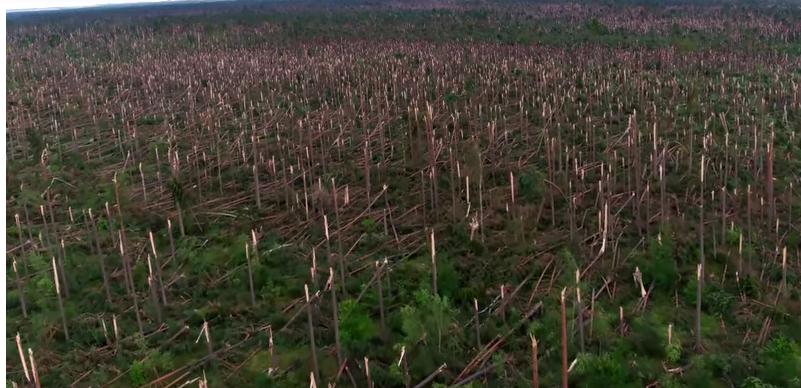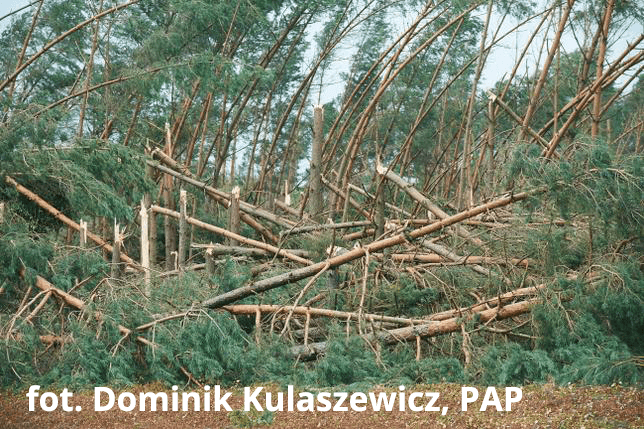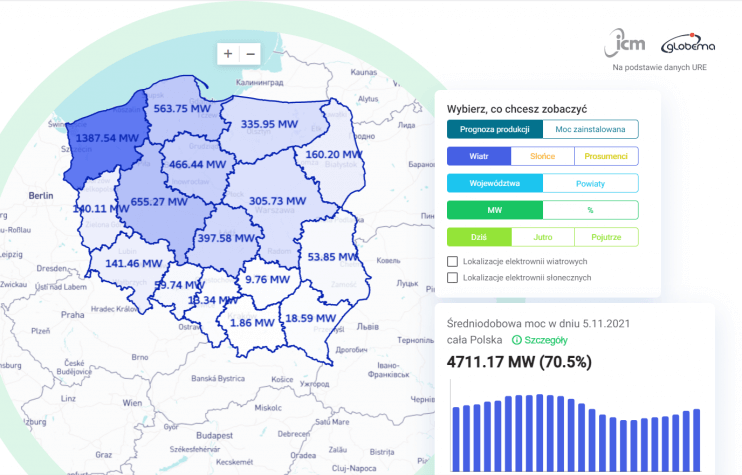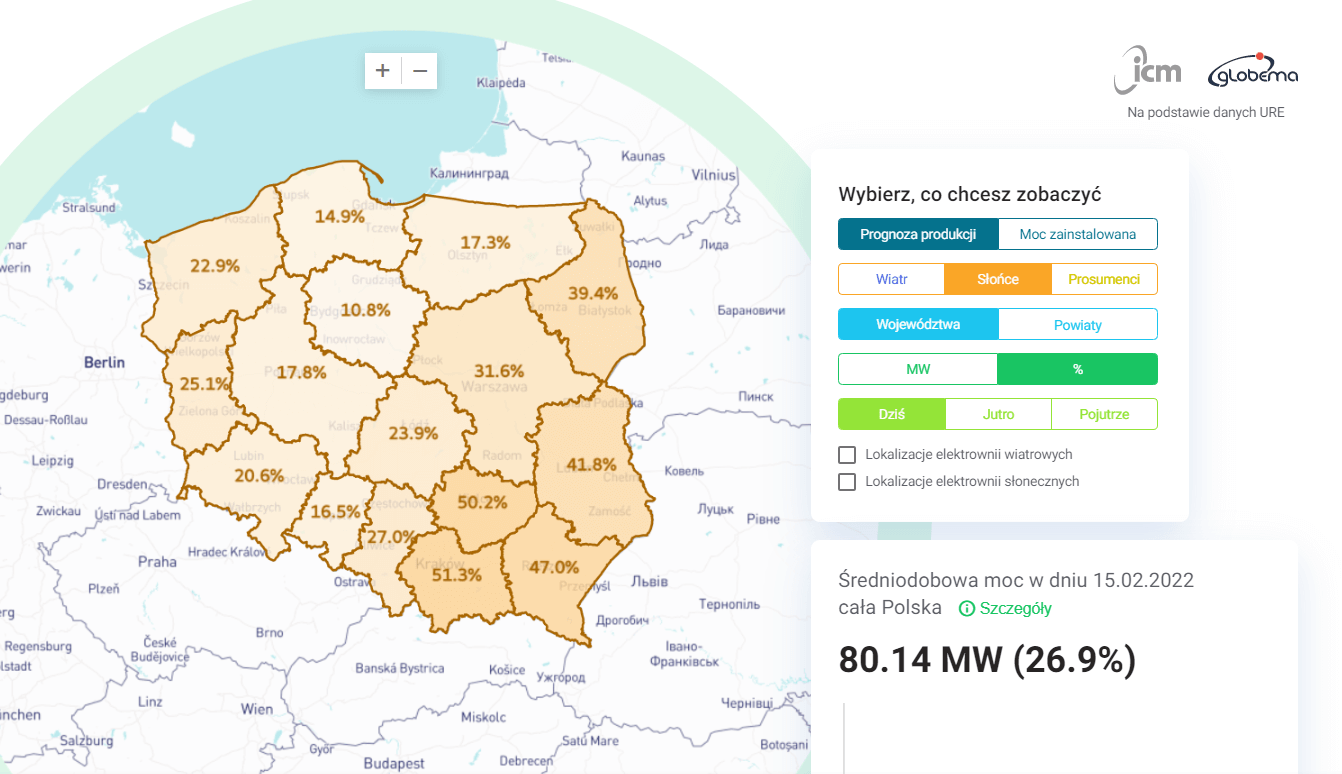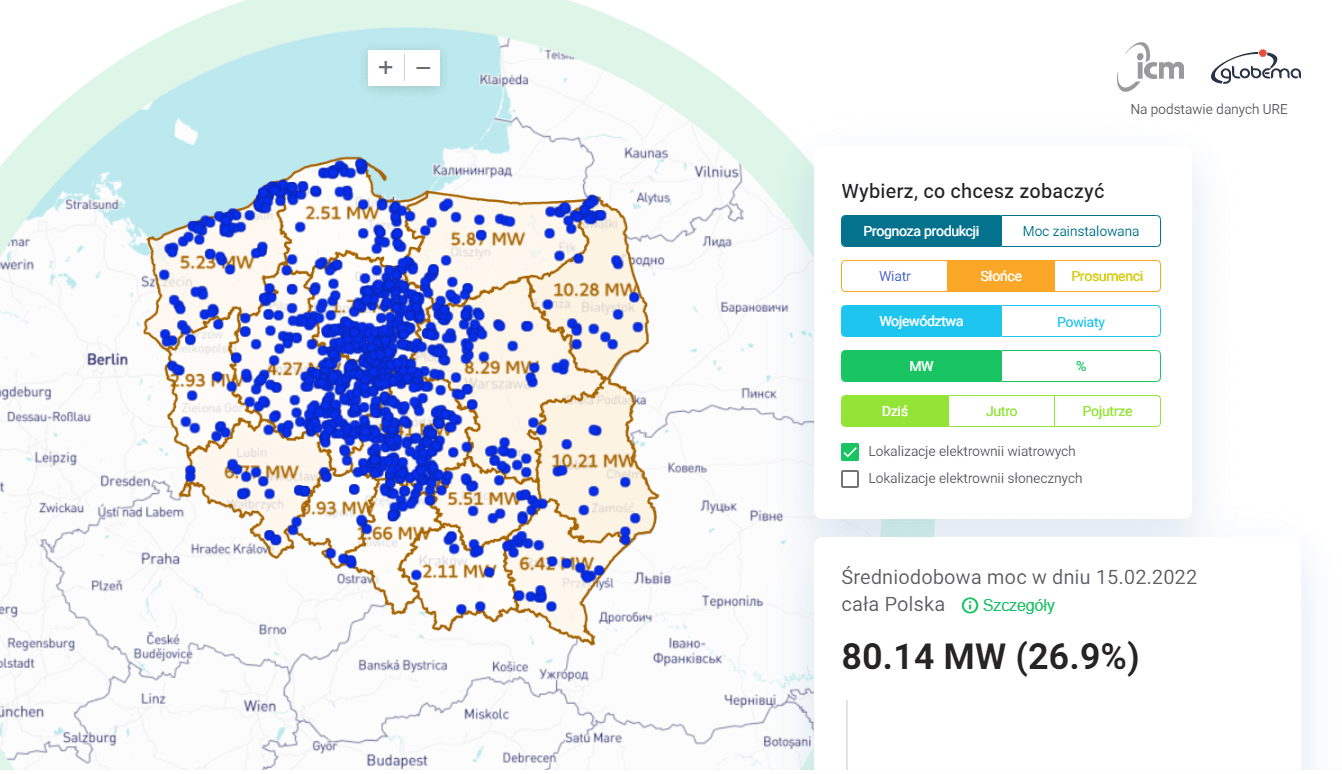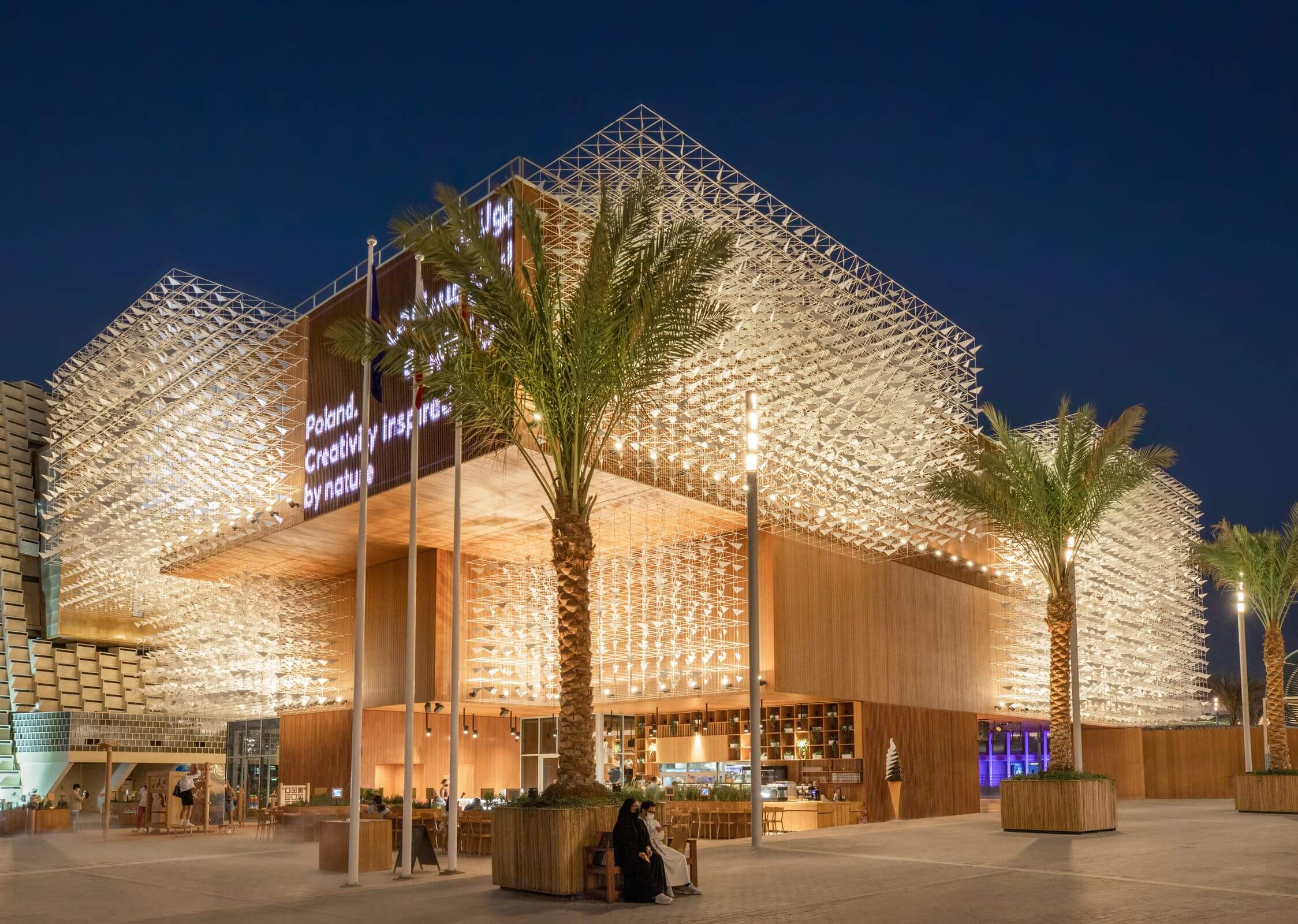Since 1996, ICM University of Warsaw has been using the resources of HPC center for research and development related to numerical modeling of the atmosphere. On this basis, forecasts of the state of the atmosphere are made, which serve as the basis for further research and other projects. The meteo.pl website shows the part of the results which concerns the layer directly next to the earth’s surface. In fact, the area covered by the calculations is 30 kilometers up and a few meters below the surface.
Currently, calculations carried out by ICM allow to predict the weather throughout Europe up to 120 hours in advance. The area covered by the detailed model extends from Venice in the south to the Arctic Circle in the north and from Frankfurt am Main in the west to Kiev and St. Petersburg in the east. The basic model used at ICM UW is UM (Unified Model) used on the basis of cooperation with the British meteorological service Met Office.
The model is run four times a day, with the forecasts at 00 and 12 UTC being extended to 120 hours. Calculation processes start automatically at specified times. Model calculations on clusters use resources dedicated to them at specific times, so that they are performed immediately. All processes are supervised by operators 24 hours a day. In order to monitor the quality of forecasts, the results of the numerical weather forecast models operating in the ICM operating mode are verified on a monthly basis based on observational data from synoptic stations. The results of the verification for Polish stations are available at: weryfikacja.icm.edu.pl. The following meteorological elements are verified: pressure reduced to sea level, air temperature at 2 m, dew point temperature at 2 m, wind speed at 10 m, wind direction at 10 m and 12 hour rainfall totals.
The results of the forecasts are archived from the beginning of their determination, which means that ICM UW has an archive starting from 1997 (currently approx. 24 years).
The Meteo team consists of experienced experts in the field of atmospheric physics, meteorology and determining climate scenarios, programmers and data analysts supported by HPC experts from other ICM UW teams.
- Academic service (cooperation with the Polish MetService).
- Meteorological activity at ICM UW since 1996.
- Results are available through public websites:
- Independent NWP models:
- UM 4km (Unified Model) UK Met Office,
- UM 1,5km (Unified Model) UK Met Office,
- WRF (Weather Research and Forecasting Model),
- COAMPS (Coupled Ocean/Atmosphere Mesoscale Prediction System).
- Forecasts are used by the public sector, scientists and commercial users.
- Flexible approach to meet sophisticated requirements.
